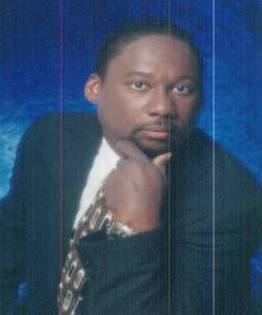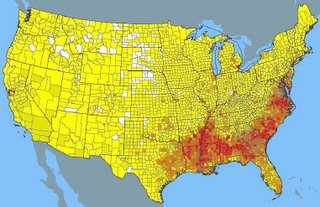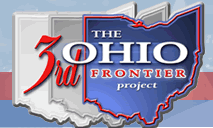Fred Hargrove PE MBA Cincinnati Change Chairman
 My name is Frederick Hargrove Sr. PE, MBA and I am a native Cincinnatian, born, raised and educated here. I grew up in many of the neighborhoods which have now been designated as empowerment zones.
My name is Frederick Hargrove Sr. PE, MBA and I am a native Cincinnatian, born, raised and educated here. I grew up in many of the neighborhoods which have now been designated as empowerment zones.I am the Chairman of Board of Cincinnati Change.
Some Background: Cincinnati Change understands the Tri-state is politically fragmented and segregated by race and class. Many poor Cincinnati residents have a high degree of desperation and hopelessness along with the belief that things cannot change. Cincinnati Change was created to “change this perception” by taking action to change Cincinnati NOW on June 19th, 2000 and took its first action at the 2000 Black Family Reunion.
In 2001, the founders of Cincinnati Change submitted a request to the Cincinnati Empowerment Corporation (CEC) that they set out procedures to issue $100M (now $130M)of revenue bonds to buy a patent and develop businesses that would have employed over 8,000 people. The request was updated in 2002 and again in 2003 at meetings that were held with the Cincinnati Empowerment Zone.
In 2004, the CEC set the procedures to issue the bonds through the Cincinnati Hamilton County Port Authority. In 2005, Cincinnati Change assembled a team to meet its organizational objectives through creation of a mutual fund to fund its mission in order to Change Cincinnati NOW. On June 19th, 2005 Cincinnati Change received its charter from the State of Ohio and stands ready to change Cincinnati NOW.
Cincinnati Change is creating a limited liability company called Queen City Development Group who will become operational 1 March 2006. On Feb. 25th 2006 Cincinnati Change started to organize the community to develop approximately 15 acres " eight city blocks " of prominent waterfront property that has been pre-assembled, at one time, with the opportunity to tap into surrounding anchors that will, by 2009, generate approximately a million visitors annually to the area. Over 500,000 visits wil happen from kids in the region and foriegn exchange student visits.
Under the Cincinnati Change plan of action is where I would be chairman of a 200 member LLC with the executive board made up of the Cincinnati Change Treasuer Irvin Henderson, Rev. Charles Britton, Dr. John Hurlimann, Pastor Wanda J Lloyd-Daniels of Churches Can Change Cincinnati NOW, the United Methodist Churches Mens Conference of Cincinnati District, the 100 male march ministries, and a repersentative from ELMC who will handle technology along with 8 other appointees.
Cincinnati Change has hired three companies I have equity in Lloyd Daniels Development Group, LLC.(where I am President), Hargrove Engineering, LLC (which I own), and Education Learning Management Company LLC.(I am the managing director), along with Wilson Military Academy and other partners (including a 501(c)3) to be part of the team that proposes that we create a local master developer for the riverfront who will team with global development partnership.
Under my leadership I see Cincinnati Change forging alliances with the faith based comunity and others to encourage increased economic stability in Hamilton County. We will do that by heliping to rebuild the south with the development of a third frontier creative class information highway infrastructure for real estate development.
I have worked with other founders to create a joint venture company which will provide jobs through the acquisition and development of businesses, intellectual property and real estate properties through this lead developer which is to be called Queen City Development Group.
I went to school in Walnut Hills and graduated from Walnut Hills High School. I am a experienced 30 year Professional Engineer and have a Masters in Business Administration. I have lived in Japan and been around the world in my role as a consulting engineer.
I was born in the West End of Cincinnati, Ohio, shopped in Over the Rhine, and, when in college, I lived in Mt. Auburn and Clifton Heights. Most of my relatives were lived in Avondale and most of my school friends lived in Evanston.
Cincinnati has been my home and the home of my parents since the early 1950’s when they were forced to leave the south to avoid racial prejudice. As was consistent with the times, my parents came to Cincinnati to live with their relative and start a new life.
On September 25, 1954, I was born. I have lived in many different neighborhoods in Cincinnati and have spent most of my 48 years here. I have raised my family here and am proud of my heritage here.My education here started at Millvale Elementary, I was Valedictorian of my junior high school and graduated in the top 25% of my class at Walnut Hills High School. I was a National Merit Scholarship Finalist.
I went to the University of Cincinnati on full scholarship from General Electric for Metallurgical Engineering and a full scholarship from Procter and Gamble for Mechanical Engineering. After graduation I went to work for Procter and Gamble in their Engineering Division and was placed in their “fast track program for management candidates”.
During my tenure at Procter and Gamble I designed many patentable devices,( not the least of which was the device which produced the “Folger’s Coffee Crystal”) but because I was an employee all such creations were the property of Procter and Gamble and I was proud to simply be doing my part.
After five years of proven service I was sent to school to get my MBA to continue my rise in the organization. I graduated from Hood College with an MBA in operations. At the time, Hood College, in Frederick Maryland, was rated as the best small college in the United States.In 1980 Procter and Gamble, went thru reorganization and my mentors, as were many other people, were displaced. The company downsized and since I was in school, I was part of that down sizing.
However fortune smiled on me and I was able to gain employment with NCI, the National Cancer Institute, at Fort Detrick in Frederick Maryland, as an engineer in charge of the design, construction and maintenance of research facilities. My experience at Procter and Gamble allowed me out shine all of my competition and promotions and recognition quickly followed.
During my stay there I was invited to join the Board of Directors at NIH, the National Health Institute in Bethesda Maryland.I was a technical advisor, offering advice on the feasible and safety of allowing certain contagious research to be done in the research facilities controlled by NIH. This experience brought me face to face with the latest technology for the control and containment of infectious disease and biological agents such as AIDS, all types of Cancers, Anthrax and other contaminants still listed as classified.
During my stay at Fort Detrick, I was co-opted by the United State Army to provide engineering support for their “experiments” at Fort Detrick. (As a point of information, Fort Detrick was the old biological warfare facilities for the United States Military). Fort Detrick is about 45 miles from Washington D.C. It was also the home of Air Force One and the East Coast Relay Station which was responsible for the defense of the entire eastern seaboard.) During my stay on the east coast I worked for NCI, NIH, and the Department of the Army and as a security contractor the Department of Defense.
Based on my experience I am qualified to design a P-4 level facility anywhere in the world and currently design hospitals. I am currently on assignment with one of the worlds biggest design/builders of hospitals. I am now designing the hospital of the future with partners that can be built today. I also worked for a firm responsible for design clean rooms and chip manufacturing rooms and designed one of the first class 1 clean room facilities.
In 1986 I received a call from Procter and Gamble. It appeared they had a project which required certain expertise which was possessed by only a handful of people. I was one of them. It involved a cost saving project which resulted in a savings of approximately $200,000,000.00 per installation. Until this point they were unable to prove this technology.
My assignment was to prove this technology, install it, and perform a successful test. Six months later we had our first successful run of a technology which had the potential of saving billions of dollars in capital equipment requirements. Riding on this success, I decided it was time to venture out on my own.
I started what is now Hargrove Engineering L.L.C. in 1988. (It’s precursor, Hargrove Design and Drafting Services had started two years earlier, in 1986.) In the last eighteen years, I have personally led hundreds of design projects. I have actively participated in every design which has come into our office, whether it was a single family dwelling or a collaborative effort with NASA and Martin-Marietta to place a man on Mars. Our last two major government assignments was the management of the replacement of the roof at the US Army Tank Plant and a 2002 Homeland Security Contract for the city of Cincinnati Water Works.
Cincinnati has the opportunity to become the crown jewel of the Midwest once more. Acting in conjunction with a whole host of entities who believe there is still some majesty left in Cincinnati, we are attempting to be the catalyst for this revitalization. We profess a plan of overall inclusion with shared opportunities for everyone up and down the economic scale.
Our plan is to develop partnerships with experienced builders who can work with us to create a million smart homes by 2015. They will be for first responders, educators, public service employees, the military, fire fighters, police, health care workers and the students in creative class or third frontier organizations that bridge the gap to those who have not. We will use a already established mutual fund with over $600M in current investments.
No one can do this alone and we propose to do this because we are not alone. As long as there is good will among like-minded people dedicated to the improvement of life among the masses, we will never be alone.
I consider myself a product of the empowerment zones and along with partners like Hershel Daniels, Junior stand ready to develop housing under the authority of the President of the United States. I helped form on June 19th 2005 Cincinnati Change as my agent to do this.
We at Cincinnati Change believe that we can Change Cincinnati NOW. To make this happen, as Cincinnati Change’s Chairman I have accepted a position with Lloyd Daniels Development Group LLC as President in their development in Port Arthur, Texas as the center point of redevelopment efforts in the south which will employ people in Texas and Ohio by the end of 2006 in building smartHOMES and buildings with our technology built into them.




 CONSTITUTIONAL AMENDMENT
CONSTITUTIONAL AMENDMENT 